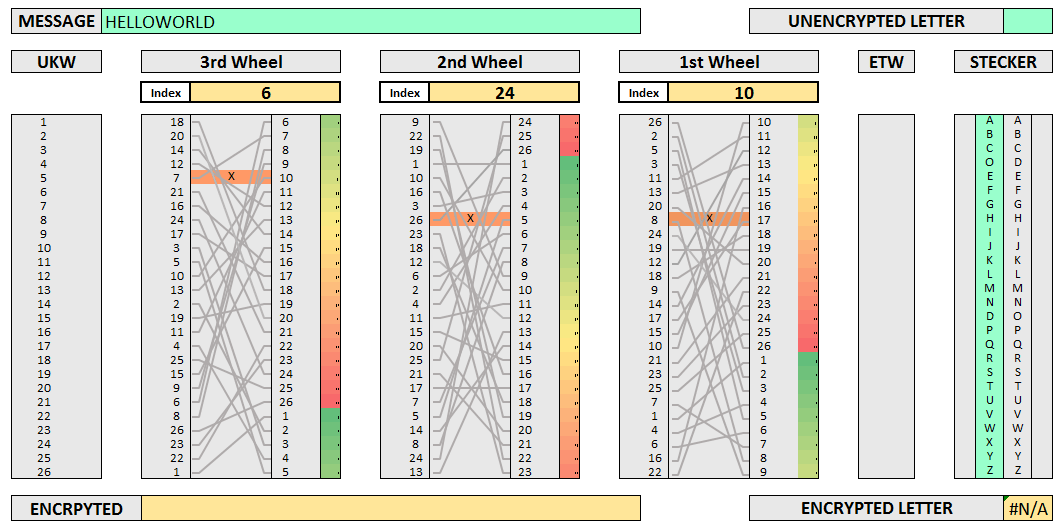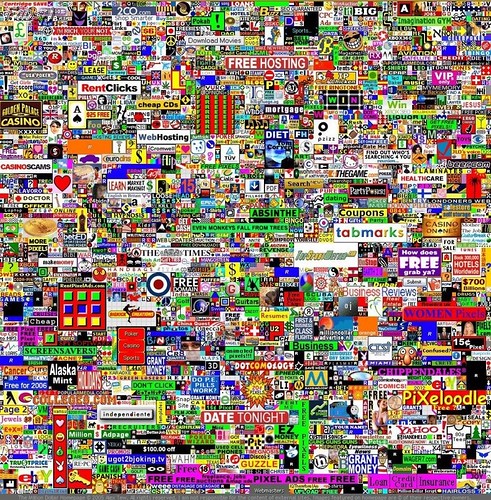
The US Department of Energy had a presence in Second Life. That might be all that’s left soon. Photo by rikomatic on Flickr.
You can now sign up to receive each day’s Start Up post by email. You’ll need to click a confirmation link, so no spam.
A selection of 11 links for you. Use them wisely. I’m @charlesarthur on Twitter. Observations and links welcome.
Pandora shuts down in Australia and New Zealand after five years • Music Business Worldwide
»
The digital radio company, which launched in Australia and New Zealand in 2012, is officially closing down its app and website in the territories on Monday (July 31).
Approximately 5m registered customers in the region will be locked out of their accounts, having received a message from Pandora which tells them: “We’re honored to have connected so many listeners with the music they love these past few years. Thank you for your loyalty and the opportunity to serve you.”
The cost-cutting move will undoubtedly have a detrimental effect on Pandora’s global active monthly listener count, which was last officially pegged at 76.7m in Q1.
However, it sets up the beginning of a new US-focused era at Pandora, which offloaded ticketing arm Ticketfly to Eventbrite for $200m last month – while selling an effective 16% stake in its business to SiriusXM for a $480m investment.
«
That noise you hear is the fat lady clearing her throat.
link to this extract
P&G cuts more than $100m in ‘largely ineffective’ digital ads • WSJ
Alexandra Bruell and Sharon Terlep:
»
Procter & Gamble said that its move to cut more than $100m in digital marketing spend in the June quarter had little impact on its business, proving that those digital ads were largely ineffective.
Almost all of the consumer product giant’s advertising cuts in the period came from digital, finance chief Jon Moeller said on its earnings call Thursday. The company targeted ads that could wind up on sites with fake traffic from software known as “bots,” or those with objectionable content.
“What it reflected was a choice to cut spending from a digital standpoint where it was ineffective, where either we were serving bots as opposed to human beings or where the placement of ads was not facilitating the equity of our brands,” he said.
«
That’s from a total spent of $2.45bn, it seems. It’s not cutting back on Facebook spending, though. Seems like worse news for ad tech companies than the big two of Facebook and Google.
link to this extract
Apple says it is removing VPN services from China App Store • Reuters
»
Apple says it is removing virtual private network (VPN) services from its app store in China, drawing criticism from VPN service providers, who accuse the U.S. tech giant of bowing to pressure from Beijing cyber regulators.
VPNs allow users to bypass China’s so-called “Great Firewall” aimed at restricting access to overseas sites.
In January, Beijing passed laws seeking to ban all VPNs that are not approved by state regulators. Approved VPNs must use state network infrastructure.
In a statement on Sunday, an Apple spokeswoman confirmed it will remove apps that don’t comply with the law from its China App Store, including services based outside the country.
Beijing has shut down dozens of China-based providers and it has been targeting overseas services as it bids to tighten its control over the internet, especially ahead of the Communist Party congress in August…
…”We view access to Internet in China as a human rights issue and I would expect Apple to value human rights over profit,” Sunday Yokubaitis, president of Golden Frog, which oversees VyprVPN told Reuters on Sunday…
…VPN providers say that while the apps are not available on the store, users are still able to manually install them using VPN support built into Apple’s operating system.
«
What’s not clear: whether already-installed copies of those apps will vanish from users’ handsets.
link to this extract
Why the scariest nuclear threat may be coming from inside the White House • Vanity Fair
»
A month after the election Pyle [Thomas Pyle, president of the American Energy Alliance, which, upon inspection, proved to be a Washington, D.C., propaganda machine funded with millions of dollars from ExxonMobil and Koch Industries] arrived for a meeting with Energy Secretary Ernest Moniz, Deputy Secretary Sherwood-Randall, and Knobloch. Moniz is a nuclear physicist, then on leave from M.I.T., who had served as deputy secretary during the Clinton administration and is widely viewed, even by many Republicans, as understanding and loving the D.O.E. better than any person on earth.
Pyle appeared to have no interest in anything he had to say. “He did not seem motivated to spend a lot of time understanding the place,” says Sherwood-Randall. “He didn’t bring a pencil or a piece of paper. He didn’t ask questions. He spent an hour. That was it. He never asked to meet with us again.”
Afterward, Knobloch says, he suggested that Pyle visit one day each week until the inauguration, and that Pyle agreed to do it—but then he never showed up, instead attending a half-dozen meetings or so with others. “It’s a head-scratcher,” says Knobloch. “It’s a $30-billion-a-year organization with about 110,000 employees. Industrial sites across the country. Very serious stuff. If you’re going to run it, why wouldn’t you want to know something about it?”
There was a reason Obama had appointed nuclear physicists to run the place: it, like the problems it grappled with, was technical and complicated. Moniz had helped lead the U.S. negotiations with Iran precisely because he knew which parts of their nuclear- energy program they must surrender if they were to be prevented from obtaining a nuclear weapon. For a decade before Knobloch joined the D.O.E., in June 2013, he had served as president of the Union of Concerned Scientists. “I had worked closely with D.O.E. throughout my career,” he says. “I thought I knew and understood the agency. But when I came in I thought, Holy cow.”
«
When Michael Lewis writes about a topic, it’s something to pay attention to. This is a very long article – save it for your lunch hour perhaps – but it’s very important. The closing lines:
»
if you are seeking to preserve a certain worldview, it actually helps to gut science. Trump’s budget, like the social forces behind it, is powered by a perverse desire—to remain ignorant. Trump didn’t invent this desire. He is just its ultimate expression.
«
Charlie Gard: facts, medicine, and right-wing fictions • Medium
I wrote about this case, which has created a huge amount of misunderstanding – a lot of it in the US, but quite a lot in the UK too. Here’s the first of three key misconceptions:
»
“there was a treatment”.
No, there wasn’t. The specific variant of mitochondrial DNA depletion disease which Charlie Gard had, RRM2B, affects both muscle and brain, and has never been effectively treated, much less reversed or “cured”. There is no known cure for mitochondrial disease, though there are treatments of varying efficacy for some variants. If you know someone who was “treated” and is now “better”, it was a less aggressive variant. (A doctor of genetics told me on Twitter that this is an incredibly rare variant of the range of diseases, and “one of the most catastrophic”. This variant affects the DNA in the nucleus so that the mitochondrial DNA is not renewed, which means that the cells progressively can’t generate energy. RRM2B is so rare there have only been about 20 documented cases ever.)
“TK2”, another variant of MDDS, doesn’t affect the brain as RRM2B does. Professor Michio Hirano (on whom more later) has had some limited success treating TK2 patients. But he’s never tried treating a RRM2B patient. (Unsurprising, given its rarity.)
«
There is more, including the legal points. I’ve had a lot of responses from doctors and lawyers – so far (on Sunday) all positive. There’s a lot of misunderstanding about this story.
link to this extract
Social media and Charlie Gard: populism versus public services? • LSE Polis
Ranjana Das is a senior lecturer at Surrey University:
»
My research on the social media presence of this community [supporting the parents’ wishes re Charlie Gard] has shown up some pretty classical markers of populist politics which individuals, most of whom very emotionally affected by Charlie’s case, have been displaying, and I argue that these findings hold implications for public relationships to healthcare that we now need to consider in a constantly mediated society. Populism has long been discussed as an ideology which posits an image of the forgone, or left-behind as the opposition to the establishment peopled by ‘the elites’.
The role of the media is key here of course. Kramer’s use of media populism defines it as the use of “stylistic and ideological elements by some media, viz. the construction and favouritism of in-groups, hostility toward, and circumvention of the elites and institutions of representative democracy, sentiments (thus on an emotionalizing, personalizing, and ostentatiously plainspoken discourse.”
It is precisely this that the social media campaign around Charlie Gard has demonstrated.
«
Sci-Hub’s cache of pirated papers is so big, subscription journals are doomed, data analyst suggests • Science
»
There is no doubt that Sci-Hub, the infamous—and, according to a U.S. court, illegal—online repository of pirated research papers, is enormously popular. (See Science’s investigation last year of who is downloading papers from Sci-Hub.) But just how enormous is its repository? That is the question biodata scientist Daniel Himmelstein at the University of Pennsylvania and colleagues recently set out to answer, after an assist from Sci-Hub.
Their findings, published in a preprint on the PeerJ journal site on 20 July, indicate that Sci-Hub can instantly provide access to more than two-thirds of all scholarly articles, an amount that Himmelstein says is “even higher” than he anticipated. For research papers protected by a paywall, the study found Sci-Hub’s reach is greater still, with instant access to 85% of all papers published in subscription journals. For some major publishers, such as Elsevier, more than 97% of their catalog of journal articles is being stored on Sci-Hub’s servers—meaning they can be accessed there for free.
Given that Sci-Hub has access to almost every paper a scientist would ever want to read, and can quickly obtain requested papers it doesn’t have, could the website truly topple traditional publishing? In a chat with ScienceInsider, Himmelstein concludes that the results of his study could mark “the beginning of the end” for paywalled research.
«
The “beginning of the end” has been predicted for science paywalls many times. We’ll see if this marks that true start.
link to this extract
Update your Android now – many holes fixed including ‘BroadPwn’ Wi-Fi bug • Naked Security
»
The most intriguing [Android] bug this month, however, is an RCE flaw in the Broadcom Wi-Fi code that’s used by Android devices equipped with certain Broadcom wireless chips.
According to Google, “a proximate attacker [could] execute arbitrary code within the context of the kernel”.
In plain English, that means a crook who’s within Wi-Fi range could fire off booby-trapped network packets at your Wi-Fi hardware, trigger a bug in the wireless device…
…and end up with the same programmatic powers as the Android operating system on your device…
…What we can’t tell you is when the vendors of devices other than Google’s own Nexus and Pixel phones will be ready with their patches – if you’re worried, ask your vendor or the carrier who supplied your device.
Also, we can’t give you a handy list of the thousands of different Android devices out there that not only include Broadcom wireless cards but also have firmware that’s affected by the BroadPwn bug.
Once again, if you are worried, ask your supplier or mobile carrier.
«
So it looks as though, as long as your Android phone gets the July 2017 security fixes, it will be protected against the BroadPwn attack. Unknown: when/whether your Android phone will get those.
link to this extract
Oh shit, Will.i.am could soon be in charge of your smart home • Gizmodo UK
»
Among Will.i.am’s gadgets that haven’t taken off, he’s released: a $315 iPhone case that had its own app called i.am+foto.sosho, a smart watch that was actually a smart cuff that was actually two smart cuffs that you wear at the same time, and, most recently, some high-end headphones that make you look like you’re wearing two of Lieutenant Uhura’s earpieces at the same time. In 2016, he launched another smart watch that required you to pay $28 a month for some sort of service and it had no apps. “The last paradigm was the apps thing,” he said at the time. And he was right. And it still is.
That shit’s in the past and Will is all about the future. The future is smart homes. 2017 is expected to be “the year of the smart home” and one recent report estimates that the tech will have a compound annual growth rate of 13.61% through 2023. Will.i.am’s company, i.am+ announced today that it has acquired the beleaguered smart home device maker Wink and together they are going to control everything in your house.
«
In general, Will.i.am getting into a sector is a good sign for the sector, but not for him.
link to this extract
Pebble, webOS design exec joins Google to lead Home, Chromecast design • Variety
»
Before joining Pebble, [Liron] Damir led the webOS design efforts at HP, and then at LG. webOS was initially developed as a mobile operating system to take on Android and iOS, but HP scrapped these efforts when it realized that it couldn’t compete with the likes of Apple and Samsung. The company sold webOS to LG in early 2013, which ended up using the operating system for its smart TVs.
Damir is joining the Google Home group at an interesting time. Google Home itself launched as a product without a screen, and Chromecast has been positioned as a device without an on-screen user interface, instead relying on mobile apps for content selection and control.
However, Google demonstrated at its developer conference in May that it is working on closely integrating both products, which will require more complex on-screen interfaces.
«
Damir was briefly at Andy Rubin’s Essential – which seems to be leaking executives at an amazing rate.
link to this extract
Apple agreed to pay €1.7bn to Nokia for patents • Nokiamob
»
In today’s financial results, Nokia mentioned that it had increased cash inflow thanks to an “up-front cash payment of approximately EUR 1.7 billion, part of which was recognized in the second quarter 2017 results.” When Nokia announced back in May that it settled all litigation with Apple, they also said that they will update its capital structure optimization program, as one reader pointed out, which means Apple agreed to pay a big one-time amount.
We contacted Nokia to confirm if the “up-front cash payment of €1.7bn ($2bn) (of which a part was recognized in Q2 results)” is from Apple, and Nokia’s PR team confirmed that and invited us to join the investor webcast at 2pm CEST here for more details.
We can conclude that Nokia scored a good deal with Apple.
«
Nokia confirmed it’s from Apple in the conference call. Hardly as if Apple can complain the amount is confidential, given its size and those involved.
link to this extract
Errata, corrigenda and ai no corrida: none notified



















/cdn.vox-cdn.com/uploads/chorus_image/image/55790511/Screen_Shot_2017_07_19_at_2.59.38_PM.0.png)






